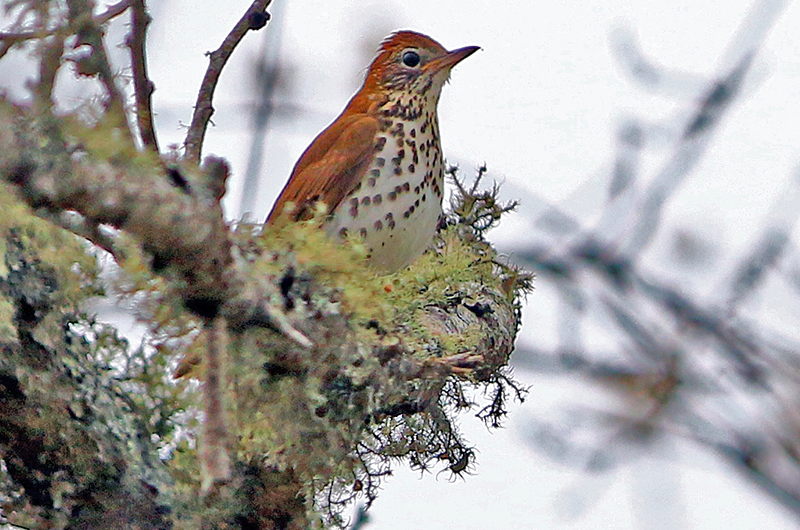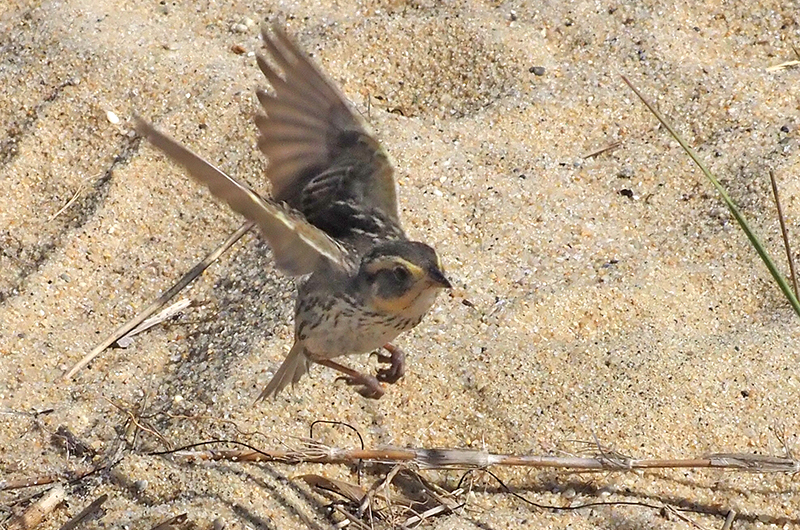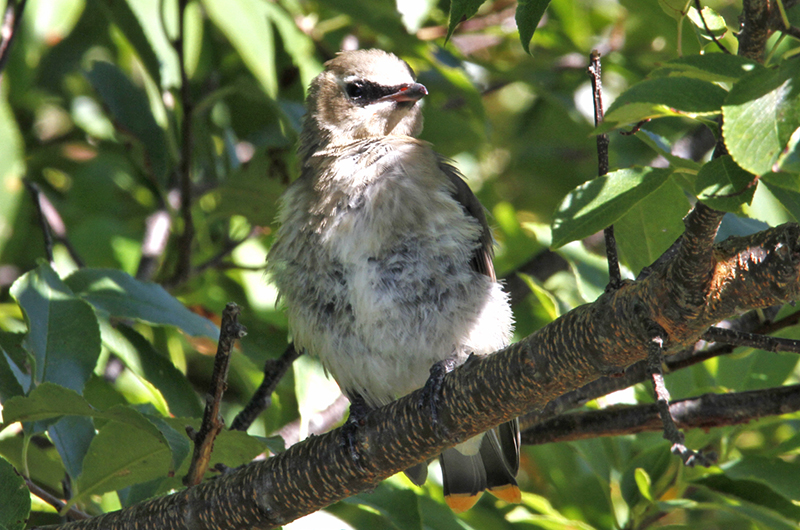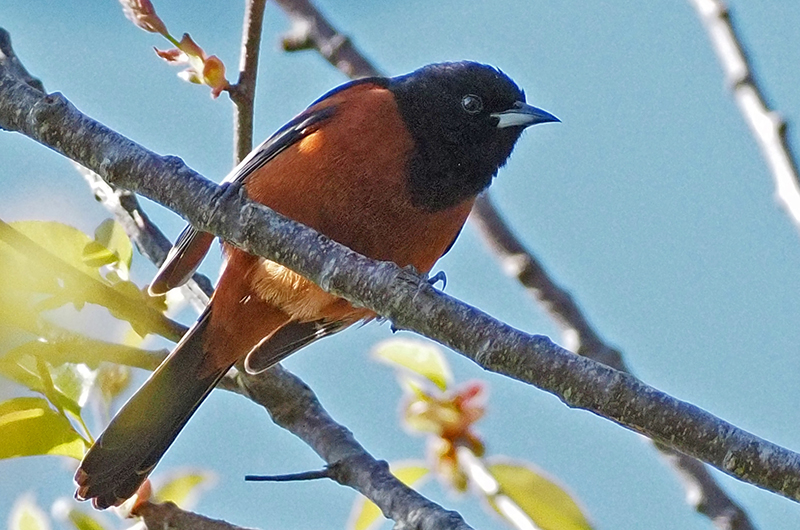The Fourth of July, which can be called the peak of the nesting season for beach-nesting birds, is this weekend. These terns, plovers and oystercatchers are either incubating eggs or have a family of chicks running around the beach.
On June 26 I spotted a young American oystercatcher flying a short way across Sengekontacket Pond from Gravel Island to a nearby mainland salt marsh. Another mostly grown oystercatcher chick was on the northern end of nearby Brush Island. Many piping plover chicks are out and about on other beaches and some of them will be fledging soon. Nesting areas are posted and roped off, leaving most of the beach for our use. It is important to leave these posted areas alone since human disturbance may lead to a chick’s untimely demise. Please share the beach with these birds!
The shearwater saga continues.
The shearwater show continues off Aquinnah. From Moshup Trail Beach, David Benvent spotted 130 Corys, 100 great, one sooty and two Manx shearwaters, as well as one northern gannet on June 27. Allan Keith found about 30 large shearwaters off Squibnocket Point on June 20; they were too far away to identify the species. There also was a pomarine jaeger, the second species of jaeger (pronounced yayger) seen this month, as Allan Keith spotted a parasitic jaeger last week. Two sightings in June is unusual as these jaegers are usually seen in the late summer and fall as they harass and steal food from other seabirds, including shearwaters.
Why are the shearwaters so much more abundant than a usual June? Well, the sand lance is a tiny fish that is perhaps the most important bait fish in our waters; almost all pelagic species eat them. They are abundant this year in our waters for some reason we do not yet understand, and their unusual abundance has attracted the shearwaters and the jaegers.
The dead shearwaters washing up on our beaches may be because of their abundance. They have just completed a long migration from their breeding grounds in the south Atlantic. This migration is stressful, especially as they cross a lot of warm and unproductive tropical ocean water. This may not be a problem for healthy birds but the weaker individuals may not get enough food and starve. It is likely that these weaker individuals, including juveniles that are only a few months old, are the ones that are dying offshore and washing up dead on our beaches. If these shearwaters were further offshore, perhaps hunting along the edges of the Gulf Stream, the dying birds would not be close to the Vineyard and many fewer would be washing up on our beaches. Every year we get a few dead shearwaters washing up, but not this many.
A number of reports have identified the dead birds on our beaches as cormorants, likely because of the similarity of their beaks. However, all the dead birds and photos I have seen or heard about are great shearwaters, not cormorants.
Avian flu has also been frequently cited as the reason for this mortality. MassWildlife has reported 14 confirmed cases of the avian flu in Massachusetts this year but all were in March when the shearwaters were 7,000 miles away on their nesting islands in the south Atlantic. I suggest otherwise; it is a coincidence of oceanic currents and food supply that has likely caused all these dead shearwaters to wash up on our beaches. However, it is still smart to avoid touching these dead birds, and to wear gloves if you must pick them up to move them. Wash your hands thoroughly afterwards.
Shorebirds have appeared this week. Are these medium-sized sandpipers lingering from their northward migration or are they the vanguard of the oncoming post breeding southward migration? Liv Sipperly spotted a greater yellowlegs on June 24 at the Farm Pond Preserve. On June 25 I saw one at Sengekontacket Pond near Farm Neck’s fourth hole, and David Benvent found on at Crackatuxet Cove. The next day David Benvent observed one at Felix Neck and Seth Buddy spotted a lesser yellowlegs on the West Chop beach. Shea Fee and Ian Davies spotted two ruddy turnstones at Cape Pogue on June 20.
Most of this week’s news is about the breeding season. Allan Keith reports that his tree swallows just finished fledging their second brood of the season and that he heard a black-billed cuckoo at Squibnocket Point on June 20. Ellen Bunch had both orchard and Baltimore orioles visiting her feeder on June 22. Lanny McDowell spotted a sharp-tailed sparrow in the Mattakessett Bay salt marshes on June 23.
On June 24 Anne Culbert observed a mockingbird nesting in a lone juniper in the traffic circle at the Steamship Authority terminal in Vineyard Haven. Julia Austin observed two downy woodpecker fledglings visiting her suet feeders on June 24. Cynthia Bloomquist spotted a robin with a recently-fledged youngster on June 24. Shea Fee heard a woodcock displaying on June 25 at Wasque. She also notes that a mourning dove is on a nest there and eastern kingbirds are busy feeding their young. That same day, David Benvent counted 10 adult and 15 baby wood ducks at Blackwater Pond.
David Benvent has done a lot of birding this week. In addition to the already-mentioned sightings, on June 25 he also found two gadwall at Crackatuxet Cove, a scarlet tanager at Blackwater Pond, a yellow-throated warbler on John Hoft Road, and two wood thrushes and a field sparrow at Waskosim’s Rock reservation. On June 27 he added a northern harrier along Moshup Trail.
Steve Allen reports that the Felix Neck Early Birders had a great walk on June 23 with 15 birders finding 45 species. Highlights were a black skimmer, at least 5 green herons, at least 6 willets, belted kingfishers, yellow warbler and a great crested flycatcher.
Please email your sightings to birds@mvgazette.com
Robert Culbert is an ecological consultant with Nature Watch LLC living in Vineyard Haven.












Comments
Comment policy »